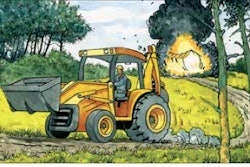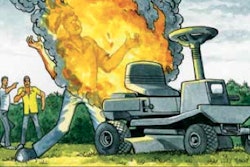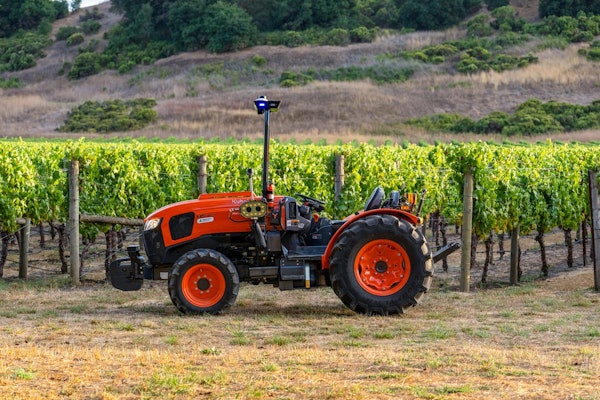Whether done under dire or purely aesthetic circumstances, certified arborists can handle felling any tree. Today, there’s room for methodology choice, whether you subscribe to old school cranes or new school air spading.
Cranes and ropes
Steve Mays, president of Carroll Tree Service in Owings Mills, Maryland, performs his services with a time-tested technique. “Ninety percent of the time, we’ll use our two cranes,” he says. “Cranes are the safest, most efficient way for us.”
Cranes are inherently less labor intensive than hand cutting. Using a cable that runs through a pulley at the end of a boom to the tree’s trunk, a climber hooks the cable to a choker around the trunk. The cut is made and the crane lifts the piece with ease. However, the size of the tree matters.
“If your capacity is 5,000 pounds, you better make sure the tree top isn’t over that capacity,” Mays warns. “You have one chance. You have to be knowledgeable about what different trees can weigh.”
A crane with a 140-foot boom can cost about $250,000. Bob Taylor, owner of Taylor Tree & Lawn Care in Churchville, Maryland, relies on ropes to get the job done.
“In most cases, we keep trees under control by putting a rope through them and lowering them down branch by branch,” Taylor says. For his company, a crane is a last resort due to cost. “The crane is the most expensive way,” he says. “It adds a minimum $1,000 to the job price depending on the time needed.”
Crane rental fees can cost between $1,000 and $2,500 per day. But, Taylor uses cranes when working in urban settings, where jobsites can be tight.
The air spade technique
Chris Cipriano, owner of Cipriano Landscape Design in Ramsey, New Jersey, has developed an air spading technique for sustainable tree removal and transport, retaining up to 95 percent of the rootball.
“It’s a new technique that uses compressed air to unearth the root system and tree trunk, which keeps all of the fibrous roots intact,” Cipriano says. Mechanical spading, where metal blades cut a circle into the ground to collect the rootball, or hand digging only preserve 30 percent to 50 percent of the roots.
Other benefits of air spading are trees re-establish themselves quicker, adjust to other soils better and can be removed every season. Using only an air spade reduces costs and takes less time. Depending on your typical job situations, the technique of the future might be worth looking into.










